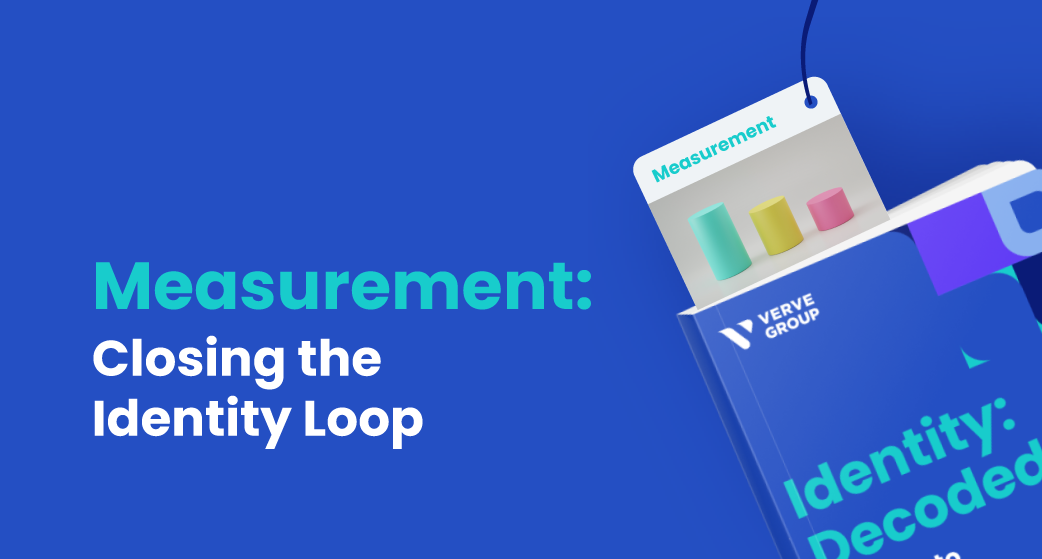As the digital ecosystem shifts to privacy-first technologies and approaches, measurement tactics that rely on identifiers will evolve or disappear.
Many marketers worry about what that will mean for the precision of their measurement and attribution — and, no doubt, the marketplace is shifting. But where are we headed?
Sales lift, which may be tied to an identifier today, will still be available in the future via modeled or panel-based techniques. Similarly, footfall measurement, which currently relies on location data, will likely be transformed.
In the future, marketers will measure footfall through modeled conversion which could yield probabilistic results, or through a panel-based study that would provide the marketer with explicit findings. And while marketers may not be able to target users at specific locations, they may be able to drive users to specific locations and measure performance.
In the coming years, we see measurement of brand and performance use cases evolving into four main categories:
| Category | Use cases |
|---|---|
| Panel-based measurement | Brand |
| Indirect feedback loop | Brand-performance |
| On-device measurement | Brand-performance |
| Modeled conversions | Performance |
Panel-based measurement
Use case: Brand
Brands and publishers can lean on their relationships with customers by turning their user bases into panels that they can solicit for direct feedback about products, services, and content. For example, YouTube runs panel-based ads that create a continuous feedback loop within its TV products. Brands and publishers can also use surveys to ask users if they are familiar with a specific brand or how likely they are to purchase products from that brand.
Indirect feedback loop
Use case: Brand-performance
Indirect feedback consists of signals or data points about customer interactions that can be collected and used to measure the effectiveness of ad spend or inventory yield. For example, indirect signals could include information about how users respond to ads, how much time they spend on a page, or even aggregated conversion information.
On-device measurement
Use case: Brand-performance
On-device measurement matches conversions to user interactions with app ads. On-device measurement capabilities can create audiences at the device level and make the audience segments, not the individuals, available for targeting.
As an example, Apple’s privacy-focused attribution tool SKAdNetwork helps ad networks attribute app installs at an aggregated level without using the Identifier for Advertising (IDFA). When ads are displayed for three seconds, the app notifies SKAdNetwork, which documents a successful view. If there is any engagement with the ad, the advertised app StoreKit is rendered, which is recorded by SKAdNetwork. If the app is installed during the SKAdNetwork attribution window, the ad network receives credit for the install, and the device sends the install postback to the ad network and a copy to the advertiser.
Modeled conversions
Use case: Performance
Methodologies such as media-mix modeling can provide marketers with a holistic view. The IAB defines marketing mix modeling (MMM) as a statistical analysis of aggregate sales, marketing, and business drivers data that quantifies the impact of different marketing channels and tactics (the marketing mix) on financial outcomes over time. The result is insights and recommendations that can be used to optimize marketing investment allocations and predict future outcomes. Self-attributing networks, where an ad network or platform like Google or Facebook models conversions that it can take credit for, may also fit within this category.
Embracing experimentation
Test, test, test should be the mantra for advertisers (and publishers) over the next 12 months. We’ve seen how early adopters in any channel can dominate that channel until others catch up. Many advertisers, agencies, and larger publishers have experimental groups that can test and try new things.
Create a longer-term plan and budget for testing privacy-first solutions such as contextual audiences and on-device measurement tools. While testing in 2024 should be actionable, testing during this period should align with a mid-term view of how companies want their products or portfolios to evolve.
In the privacy-first future, what’s old will become new again. For advertisers, that means evaluating inputs and outputs, techniques like marketing mix modeling (MMM), and experimentation. An input would be every dollar invested in a campaign or channel, and the campaign results would be the output.
Brands can study the relationship between such inputs and outputs to look for correlations or causation. These types of tests could include shifting spending to different channels and assessing the impact on KPIs. Open source and once closely-held proprietary models will become commoditized, which will help the industry run more effectively. Brands will need to constantly optimize, iterate, and experiment, with a feedback loop that will become more probabilistic than deterministic.
Cookies are almost gone. What steps should advertisers take today for better measurement tomorrow?
Advertisers should prioritize unifying their data sources, lean into data science, and elevate their tactics. They should develop and optimize their modeling techniques to suit their unique business needs. Advertisers must test tools, including those that leverage AI and machine learning (ML), to enable and automate these capabilities.
We’ve known that first-party data will be critical for marketing success in the post-cookie world. Advertisers should continue nurturing their relationship with their customers, gather online and offline intelligence about their target audiences, and follow them to whatever new environments they are spending time in. What does that look like? It may include more advanced augmented reality or gaming mediums. Don’t spray and pray. Instead, brands need to put in the work to find their desired audiences and continuously test new approaches.
As the identity and addressability conundrum intensifies, advertising will also need to lean into the measurement of the media and content their audiences consume. This means more contextual campaigns and turning to metrics that are more nuanced than mere viewability. Attention metrics such as Adelaide’s Attention Unit (AU) help measure media quality and optimize targeting. As we announced in 2022, Verve incorporated AU into our contextual advertising solutions, allowing for deeper insight into campaign performance and brand outcomes.
The measurement and attribution landscape is evolving alongside the identity landscape, and it’s important for marketers to stay abreast of the strategies and tactics that will remain viable in the future.
For a detailed look at how the identity landscape is shifting, and what that means for advertisers and publishers alike, download IDENTITY: DECODED, a comprehensive guide to identity in ad tech.








